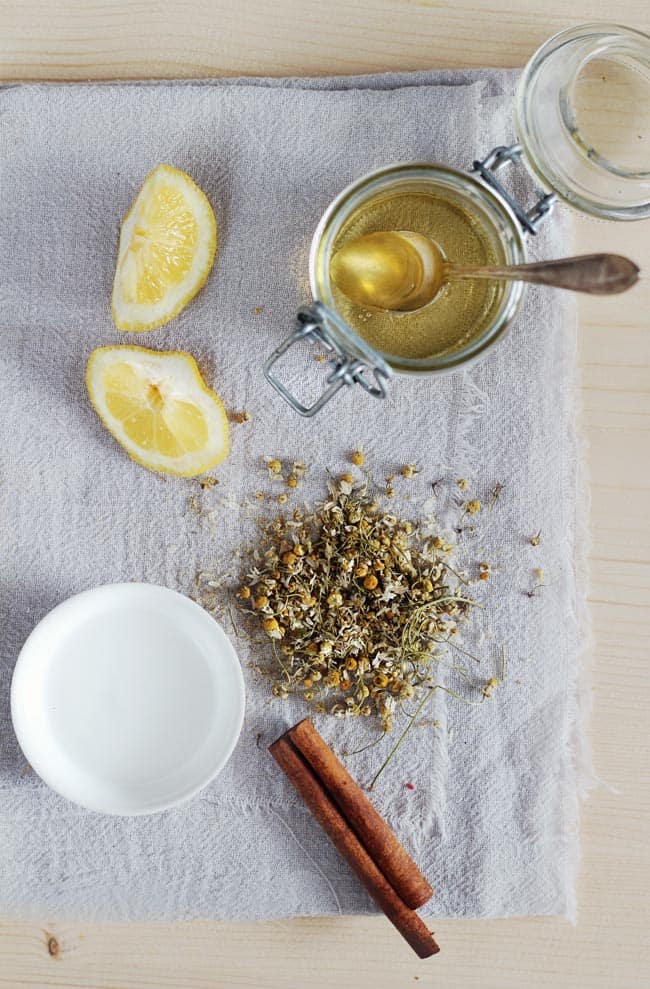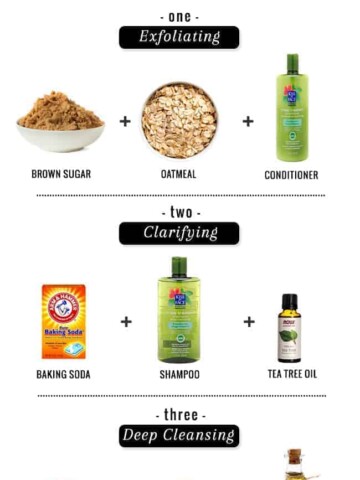If you’ve been on a mission to lighten your hair, you’re in good company. In fact, people have been fighting dark roots for centuries, with natural hair-lightening techniques dating all the way back to the Roman Empire. Despite how far we’ve come in terms of hair-dying technology, we’re still striving to find new, natural ways of achieving the hair hue we desire.

Is it possible to naturally lighten hair?
First thing first, you might be wondering if it’s even possible to lighten your own hair without the use of hair dyes. The short answer is yes.
However, these methods aren’t nearly as powerful at lightening as good old bleach.
“Lightening hair is a very finicky process because it involves opening the hair shaft and cuticle and lifting the pigment out,” explains Natalie Sibert, senior stylist and colorist at the hair salon Mirror Mirror Austin. “Bleach breaks down into the hair follicle while hydrogen peroxide, an oxidizing agent, strips away existing color.”
She describes it like a straw full of colorful beads, which represents your hair shaft and the pigment inside. “When you bleach your hair or lighten it, it would be the same as taking your finger off one end of the straw and slowly letting those beads come out,” she says.
It’s worth noting that natural lightening methods will only lift hair a shade or two. What’s more: The ideal candidates are natural blondes and those with light brown hair.
“Anyone with virgin hair, and preteens and teenagers who want highlights but whose parents don’t want to foot a salon bill or have chemicals damaging their child’s hair are also good candidates,” notes Sibert. “Unfortunately, people with box-dyed hair, damaged or brittle hair, or dark hair are not good candidates for naturally lightening hair, as the lightening methods involved could cause even more damage to the strands.”
6 Ways To Lighten Hair Naturally
When planning to use natural methods to lighten your hair, it’s important to have the right expectations. “Your hair will not lift to a platinum blonde nor look like the girls on Pinterest,” says Sibert. “If you have an expectation of becoming a very bright blonde, natural lighting may not be for you, but if you want a few sunkissed highlights, these methods may work.”
Here, Sibert shares some of her best tips for how to actually lighten your hair without a trip to the salon or the use of at-home hair dyes.
1. Lemon juice
This is one of the oldest tricks in the books and may even be something you’ve already attempted. Lemon lightens hair when the citric acid present in lemon juice heats up in the sun and lifts pigment from the hair shaft. A hair lightening spray can be used all over the hair or spritzed just on the ends, depending on where you'd like to add natural highlights. It is most effective when paired with time in the sun.
DIY it
Sibert recommends squeezing some fresh lemon juice into a spray bottle and sitting in direct sunlight, letting the lemon juice dry on your hair while you tan (with sunscreen, of course!).
When you’re done, head inside, and you might be surprised to see some natural highlights! Word to the wise: Avoid letting the lemon juice have any contact with your skin, as it can cause burning and irritation, particularly when exposed to sunlight.
2. Apple cider vinegar
This kitchen staple has long been hailed for its ability to strip the hair of buildup. But it has some impressive hair-lightening benefits as well. “If left on long enough, apple cider vinegar may actually slightly strip the color, too,” says Sibert.
Just like with lemon juice, using vinegar as a lightener requires extreme caution, as too much can be damaging, especially if you have brittle or fine hair.
“Rumor has it that if you use white vinegar, you might be able to pull a cooler tone,” she says. “Vinegar, especially apple cider vinegar, pulls warmer or orange tones.”
DIY it
To DIY at home, mix 1 cup of water with 2 tablespoons of apple cider vinegar and the juice of ½ a lemon. Pour the rinse evenly onto wet hair and relax for 15-20 minutes. Add a bit of heat with a blow dryer or the sun, if possible. Then rinse and wash hair as normal.
3. Honey
Honey's glucose oxidase enzyme lightens the hair as it produces hydrogen peroxide [source]. And you won’t trade hair health for a lighter color because honey is also a wonderful conditioning agent.
DIY it
Combine ¼ cup each of water, honey and lemon juice in a spray bottle. Spritz onto damp hair, then part hair and pull it into a ponytail. After an hour in the sun, wash hair twice to remove residue. Overuse of lemon can dry out hair so limit to 2 times a week.
4. Chamomile
For lightening all shades of hair, tea can be an incredible ingredient. Chamomile, black, and rooibos can add dimensions to blond, brunette, and red hair colors. The benefits of using naturally derived colors from nature are numerous.
Not only are you skipping harmful chemicals found in commercial hair color and bleach, but the effects will be subtle and safe. The bonus is you don't have to worry about the damaging effects that bleach can have on the hair.
DIY it
Steep 3 chamomile tea bags in 2 cups of hot water; place in fridge. Once cool, pour onto hair and massage into roots. Add heat with a blow dryer for 1-2 minutes. Let sit for 10 minutes, then rinse. Do twice a week.
5. Salt
Ever notice how your hair gets lighter when you spend time at the beach? That's because the salt combined with the sun have a natural lightening effect on your hair. If you're vacationing at the beach it's as simple as taking a dip in the ocean and letting your hair air dry in the sun.
DIY it
For the at-home DIY version, dissolve a tablespoon of sea salt in a cup of warm water (or chamomile tea). Use as a hair spray for natural beachy waves or pour the mixture over wet hair and let hair air dry, preferably in the sun.
6. Baking soda
The last method that Sibert recommends is something known for whitening teeth—so it only makes sense that it can also help lighten hair, right? “This method is more for a balayage or ombré look—not highlights,” she says.
DIY it
She recommends mixing one tablespoon of baking soda in a bowl with one-third a cup of warm water to create a paste mixture. “Apply the baking soda paste with a tint brush or paintbrush to the hair around the face and the ends,” she says.
Remember: All natural hair lightening methods will lighten a bit brighter with heat. So, no matter which solution you choose, it’s a good idea to make sure that your hair is exposed to sunlight.
“I suggest trying natural lighteners in the summertime while gardening, tanning, hiking, or out at your kid’s baseball game,” says Sibert. “If we’re being healthy with natural lightning, then we should opt for the natural heat of the sun as well, so make sure to slather on that SPF!”
24










Leave a Comment